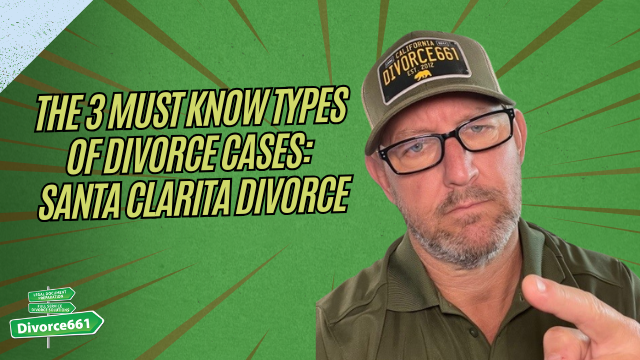😮 The 3 MUST KNOW Types of Divorce Cases: Santa Clarita Divorce
Navigating a divorce can be overwhelming, especially when you’re unsure about the different types of cases that exist. Understanding the distinctions can help you approach the process with clarity and confidence. Drawing from insights by Tim Blankenship from Divorce661, this article breaks down the three essential types of divorce cases in California: default with agreement, default without agreement, and uncontested. Whether you’re just starting the divorce journey or seeking to understand your options better, this guide will provide the foundational knowledge you need.
Introduction to Divorce Case Types in California
California law recognizes several ways a divorce case can unfold, each with its own procedures and implications. Tim Blankenship highlights three primary categories you should be familiar with. These types largely depend on whether both parties have participated in the process and whether they have reached any agreements.
The Three Types of Divorce Cases Explained
1. Default Divorce with Agreement
A default divorce with agreement occurs when one spouse files for divorce, and the other spouse does not respond or participate in the case, but the parties have already reached an agreement on all key issues such as property division, child custody, and support.
In this scenario, the spouse who filed can proceed with the divorce by submitting the agreement to the court. Since there is mutual consent on the terms, the court typically approves the divorce without requiring further hearings. This type of case can be faster and less contentious, as the agreement simplifies the process even though one party is technically “defaulting” by not responding.
2. Default Divorce without Agreement
In contrast, a default divorce without agreement happens when one spouse files for divorce and the other spouse does not respond or participate, but there is no agreement on the terms of the divorce. This type of case can be more complicated because the filing spouse must request the court to make decisions on their behalf regarding issues like asset division, child custody, and support.
Since the non-responding spouse has essentially forfeited their right to contest, the court may grant the divorce based on the filing spouse’s proposed terms. However, it’s important for the filing spouse to present a clear and fair proposal to avoid delays or complications.
3. Uncontested Divorce
An uncontested divorce is when both spouses actively participate in the divorce process and agree on all major issues. This is often the smoothest and quickest type of divorce because the couple collaborates to reach a settlement without needing court intervention to resolve disputes.
Uncontested divorces can save time, reduce legal costs, and minimize emotional stress. Both parties submit their agreement to the court, and the judge typically approves the divorce based on the mutual consent and documentation provided.
Why Understanding These Divorce Types Matters
Knowing the differences between these three types of divorce cases can help you better prepare for what lies ahead. Whether you are the filing spouse or responding to a divorce petition, understanding your options and the potential paths your case might take is crucial.
- Default with agreement offers a streamlined process when both parties agree but one is not actively involved.
- Default without agreement requires careful preparation to ensure the court grants a fair judgment despite the other party’s absence.
- Uncontested divorce promotes cooperation and can save time and money by avoiding court battles.
Conclusion
Divorce can be challenging, but having a clear understanding of the three main types of divorce cases in California—default with agreement, default without agreement, and uncontested—can empower you to make informed decisions. Whether you’re working with an attorney or managing the process yourself, knowing these distinctions will help you navigate the legal system more effectively.
If you want to learn more about divorce processes in Santa Clarita and beyond, following experienced professionals like Tim Blankenship can provide valuable insights and guidance every step of the way.

